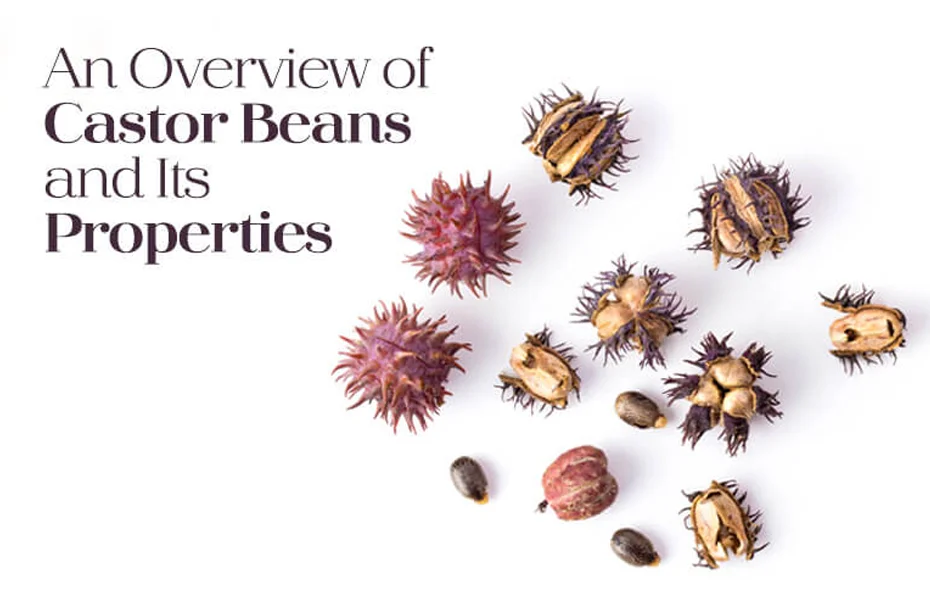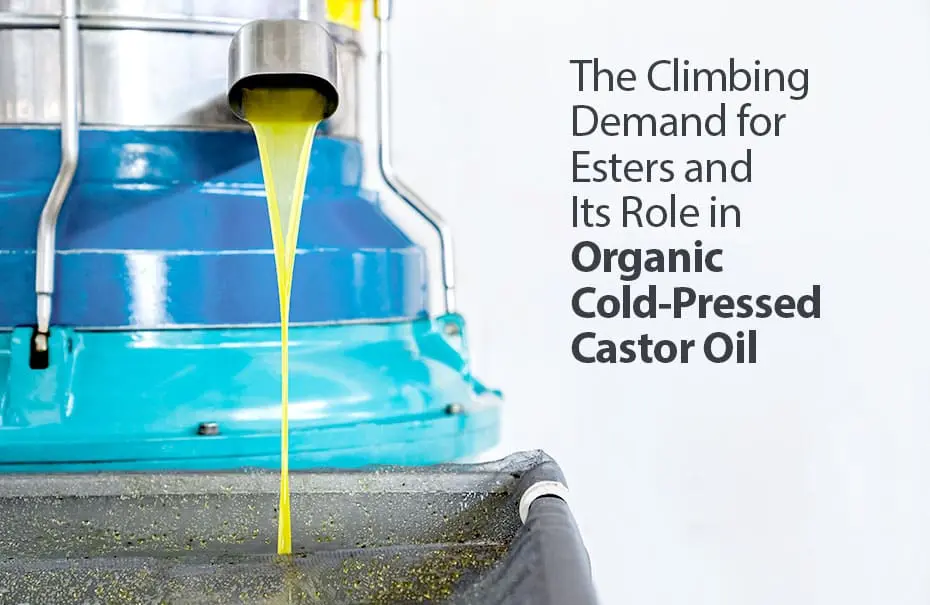An Overview of castor Beans and Its Properties

Castor Oil Plants
Ricinus communis L., commonly called castor-oil plant or castor bean is a native to the tropical regions of Africa, especially to the southeastern Mediterranean basin of Eastern Africa. Today, almost all the warm parts of the world contribute to the production of castor oil. Amongst the countries, lying in the warm zone, India, China and Brazil contribute the greatest for the cultivation of castor-oil plants and castor oil. Castor oil used for pharmaceutical and industries purposes comes from the ripe seeds of the plants. The oil-rich seeds are highly poisonous and are rich with ricin, which is one of the most toxic substances. Hence, the consumption and chewing of the seeds is fatal.
The castor-oil plant when grown in the tropics might reach a height about 10-13 meters or 30 to 40 feet. Grown as annual plants in the temperate zones, the plants reach at a height of 1.5 to 2.5 meters (4.9 to 8 feet) in a single season. The plants have giant twelve lobbed fanlike leaves. The bristly spine clustered fruits of the plant vary in color from bronze to red. Although attractive, the cultivators remove the fruits before they mature due to the mottled bean like seeds having high concentration of ricin. Besides ricin, the castor beans contain some allergenic proteins. However, the castor oil manufacturers in India process and refine the castor oil. Processed and refined castor oil is free from all allergenic substances making it safe for using in pharmaceutical applications.
Global Production of Castor Oil
People introduced the castor-oil plant in China from India approximately 1400 years ago. Presently, India is the net exporter of castor oil and contributes for more than 90% of all the exports. The major importers are the United States, European Union and China, accounting for about 84% of the total imports. India is the world’s leading country responsible for production and exporting of castor seeds and castor oil. The country produces between 250,000 and 350,000 tons of castor oil every year. Gujarat is the leading producer of castor oil followed by Andhra Pradesh and Rajasthan, contributing more than 86% of the castor seed production in India. The regions of Banaskantha, Mehsana, and Saurashtra or the Kutch region in Gujarat along with the Mahboobnagar and Nalgonda districts of Andhra Pradesh forms the leading areas of castor oil production in India.
Properties of Castor Oil
People cultivate castor beans especially for their seeds that yield a viscous, pale yellow non volatile and non-drying castor oil. Compared with standard lubricants such as SAE 40 engine oil, the values of viscosity, density, thermal conductivity, and pour point are higher in castor oil.
The unique structure of castor oil offers interesting properties, which makes it appropriate for various applications in the industries. Castor oil comprises 90% ricinoleic, 4% linoleic, 3% oleic, 1% stearic and less than 1% linoleic fatty acids. The high amount of ricinoleic acid (RA), with its usage in a variety of applications in the chemical industry, increases the value of the oil.
Due to the hydroxyl properties of RA, castor oil is a natural polyol that provides oxidative stability to the oil. Besides, the hydroxyl properties increase the shelf life of castor oil as it prevents the formation of peroxides. The presence of hydroxyl in RA and RA derivatives provides a functional group location that helps the oil to perform several chemical reactions including dehydration, halogenation, sulfation, esterification and alkoxylation. Due to the unique properties, industries use castor oil in manufacturing lubricants, paints, inks and coatings.
Use of Castor Beans
Natural Laxative
Using castor oil as a natural laxative is perhaps the best-known medical use. Medical practitioners often classify the oil as a stimulant laxative, which helps in movement of the muscles of the intestines and helps in clearing the bowels. Stimulant laxatives are effective in treating temporary constipation. When consumed orally, the oil breaks down in the small intestine, releasing RA, which stimulates the laxative effect. However, practitioners recommend consumption of castor oil in small doses. If consumed in large dosage, it results in nausea, vomiting, abdominal cramping and diarrhea.
Natural Moisturizer
As the oil is rich in RA, a monounsaturated fatty acid, it acts as humectants and used in moisturizing the skin. Humectants have the capability to retain the moisture, thereby preventing water loss through the outer layer of the skin. The cosmetic industry widely uses pure castor oil in manufacturing most of their products. Some of the most common castor oil products include lotions, makeup products and cleansers, which helps in promoting hydration to the skin. Often people mix castor oil with almond oil and coconut oil from making an ultra-hydrating moisturizer.
Wound Healing
Application of castor oil on the wounds creates a moist environment, thereby promoting the wound to heal faster and prevents the sores from drying. The popular ointment, Venelex contains a mixture of castor oil and Peru balsam, a balm derived from the Myroxylon tree. Using pure castor oil helps in the growth of tissues, hence forming a barrier between the environment and the wound. Besides the oil helps in treating several skin ailments such as dryness, cornification and prevents the buildup of dead skin cells, which leads to delay healing of the wounds.
Anti-inflammatory Effects
The main fatty acid, RA has impressive anti-inflammatory properties. Several research and studies conducted showed that the tropical application of oil helps in reducing inflammation and reducing the pain. People suffering from diseases such as rheumatoid arthritis or psoriasis found the pain-reducing and anti-inflammatory properties of the oil helpful.
Healthy Hair and Scalp
Castor oil has conditioning properties and hence used as a natural hair conditioner. Intense moisturizing properties of castor oil helps in repairing the dry and damaged hair. Regular application of castor oil helps in lubricating the hair shaft, increases flexibility and reduces breaking of hair shafts. The oil also helps in treating dandruff, a common scalp disease and characterized by dry, flaky skin on the head.
Conclusion
Although being one of the oldest crops, castor plants contributes to only 0.15% of the total production of vegetable oils in the world. Castor oil is of high importance to the global specialty in the chemical industry due to the commercial source of hydroxylated fatty acid. Although it accounts for only 0.15% in the global production of vegetable oils, yet the record of the last 25 years shows the worldwide consumption to be more than 50%, which rose from 400,000 tons in 1985 to 610,000 tons in 2010. On an average, the consumption of castor oil increased at an alarming rate of 7.32 thousand tons per year.
Ambuja Solvex Pvt. Ltd. is one of the leading castor oil manufacturers, produces both industrial and pharmaceutical grade castor oil. The firm extracts the oil carefully without disturbing the unique properties. Moreover the firm uses the purest form of castor oil for its pharmaceutical uses. Besides, Ambuja Solvex uses the high quality ingredients in manufacturing industrial products such as industrial fluids, paints, lubricants, varnishes and adhesives. It also meets the increasing global demand for castor oil.



